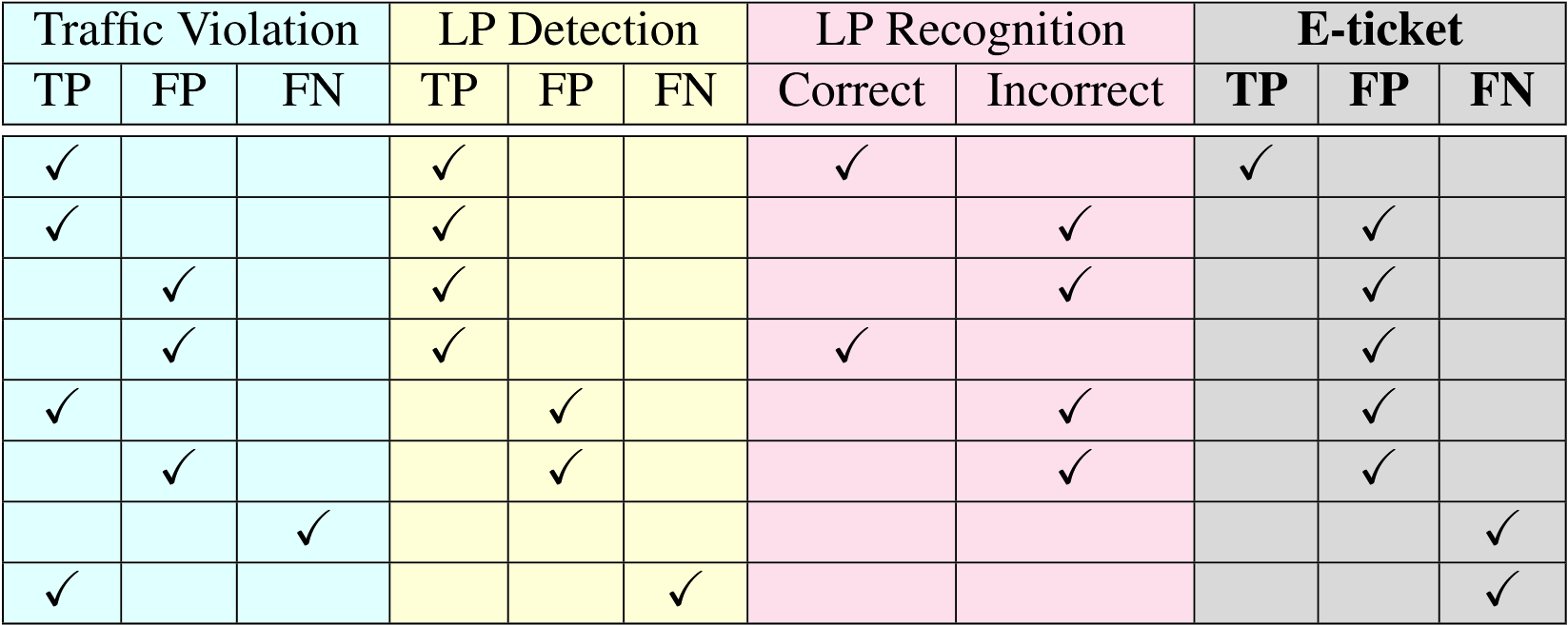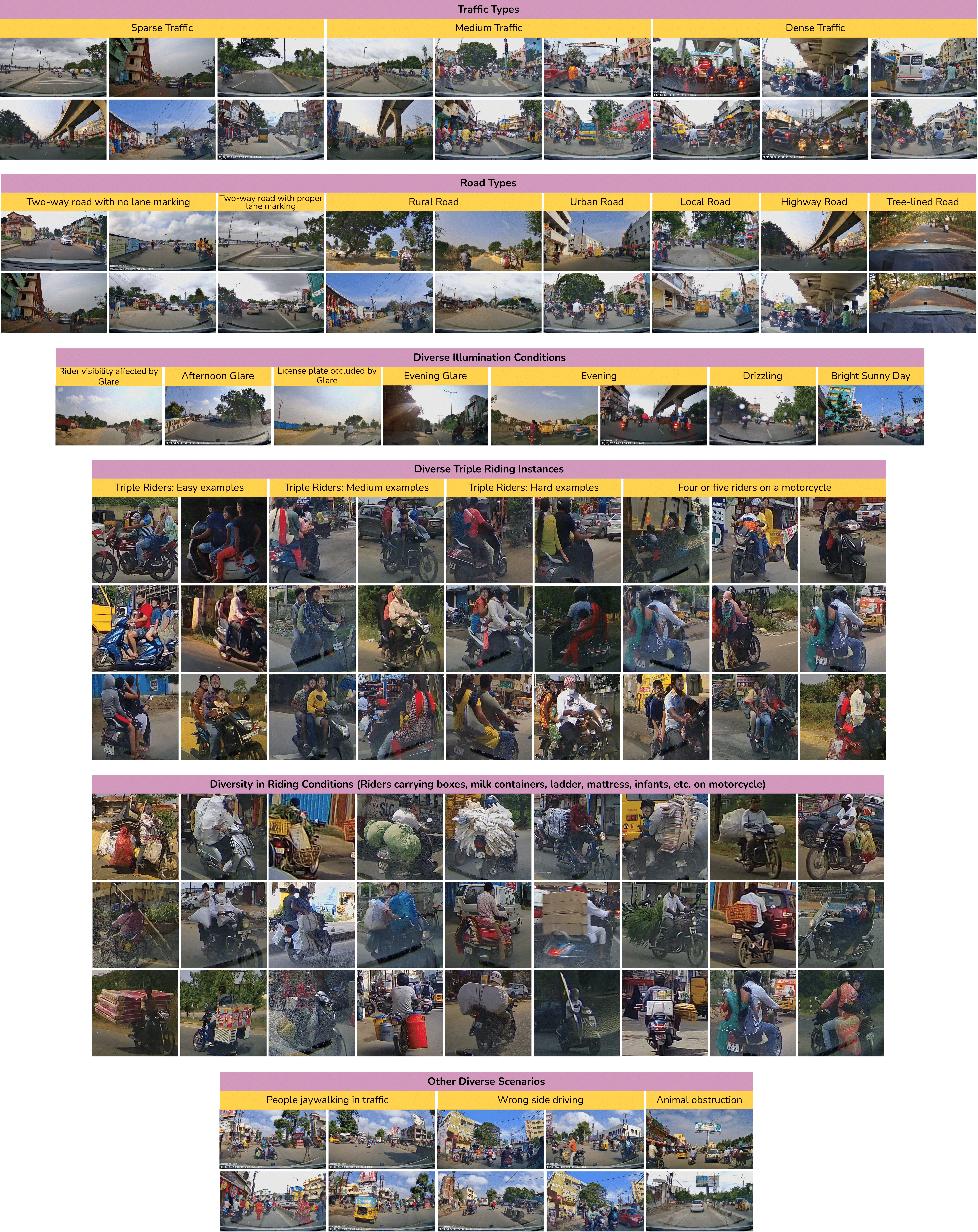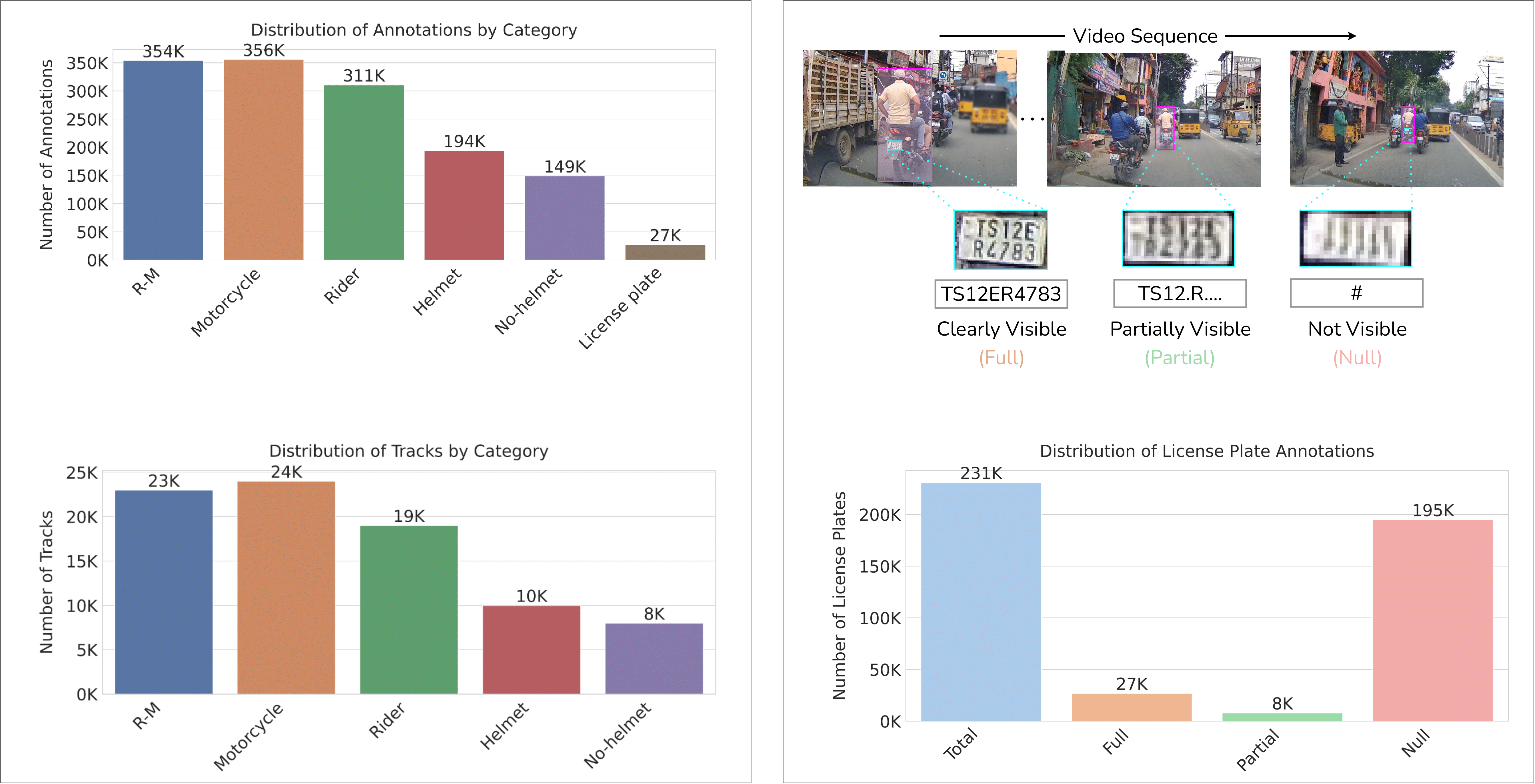Motorized two-wheelers are a prevalent and economical means of transportation, particularly in the Asia-Pacific region. However, hazardous driving practices such as triple riding and non-compliance with helmet regulations contribute significantly to accident rates. Addressing these violations through automated enforcement mechanisms can enhance traffic safety.
In this paper, we propose DashCop, an end-to-end system for automated E-ticket generation. The system processes vehicle-mounted dashcam videos to detect two-wheeler traffic violations. Our contributions include: (1) a novel Segmentation and Cross-Association (SAC) module to accurately associate riders with their motorcycles, (2) a robust cross-association-based tracking algorithm optimized for the simultaneous presence of riders and motorcycles, and (3) the RideSafe-400 dataset, a comprehensive annotated dashcam video dataset for triple riding and helmet rule violations.
Our system demonstrates significant improvements in violation detection, validated through extensive evaluations on the RideSafe-400 dataset.






